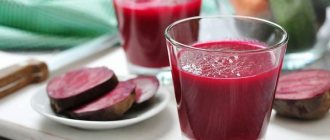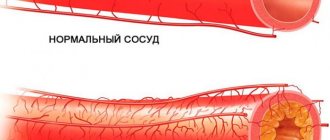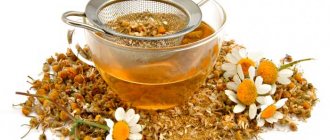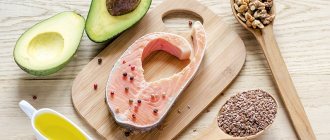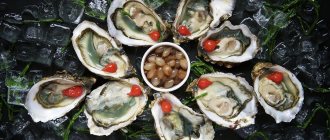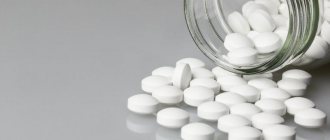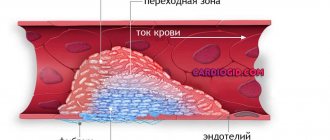It is useful for patients who suffer from high blood pressure to know which dried fruits are beneficial for their illness. It has been proven that vitamins B1, B6, E, potassium, magnesium, and folic acid reduce blood pressure. Therefore, consuming products with such a composition is beneficial for hypertensive patients. Dried fruits can gradually improve the cardiovascular system, which will lead to minimal use of medications.
Apricot. Dried apricots. Dried apricots. Useful properties of dried apricots
Dates, dried apricots, figs
- Dates: this fruit contains many minerals, trace elements, vitamins, 22 types of amino acids, and a record high amount of potassium (1900 mg). Eating dates promotes rapid restoration of physical condition and normalizes cardiac activity;
- Dried apricots: These are dried apricots (without seeds) that are sold year-round. Dried apricots have a high concentration of amino acids, minerals, and vitamins. Potassium content - 1880 mg. Fresh apricot has the same properties, but potassium - 180 mg.
- Figs: These are the fruits of the subtropical ficus or fig tree, one of the most ancient plants mentioned in the Bible. Figs have an increased concentration of fruit acids, various types of sugars, pectin substances, and essential oils. The potassium content in figs is 1880 mg. Figs normalize blood circulation, protect against blood clots, and increase the elasticity of blood vessels. Normalization of blood pressure is a natural consequence of the positive effects of figs on the cardiovascular system;
Prunes, plum, banana
- Prunes: This is the name given to plums in their dried form. All useful substances and properties are preserved unchanged after drying. Used both separately and as part of dried fruits. To increase blood pressure, a hypotonic decoction is prepared from prunes: 4 prunes, brewed for 5 minutes, mixed with black tea, infused for 10-15 minutes. The resulting infusion helps bring blood pressure back to normal. Potassium content - 1020 mg;
- Plums (white and blue): There are more than 40 types of plums, which have different shades of color. Blue plums contain 330 mg of potassium, while blue plums contain 600 mg. The basic properties and content of nutrients are the same as in prunes;
- Bananas: Blood pressure increases with regular consumption of both fresh and dried fruits. Bananas protect the body from infections, are a powerful antioxidant, and contain a lot of potassium - 400 mg;
Substances, acids and antioxidants contained in fruits have an impact on blood pressure. As a result of numerous surveys and diagnostics, it was found that vegetarians suffer from blood pressure problems much less often than “meat eaters.” This effect occurs, rather, not due to the rejection of animal products, but from the predominance of “fruit” fiber, potassium, magnesium, ascorbic acid and other substances in the diet.
Enter your pressure
Move the sliders
Potassium, which the fruit is rich in, has a positive effect on blood pressure.
Thanks to the vitamin C and antioxidants contained in fruits, the body produces hormones that dilate blood vessels and lower blood pressure. Magnesium deficiency in the human body increases blood pressure, so hypertensive patients need to eat green apples, oranges and watermelons. Bananas and melons contain potassium, which has a positive effect on blood pressure. You should also include a sufficient amount of citrus fruits, sour pomegranate varieties and peaches in your diet.
For hypotension, you should give preference to red and orange fruits. To normalize blood pressure and feel good, it is enough to drink just one glass of dark grape juice per day. Hypotonic people should include fruits for blood pressure in their diet - mango, figs, grapefruit, avocado, cherry plum, quince. Berries are no less useful - raspberries, mulberries, dogwoods. Dried fruits such as dried apricots, prunes, dates and raisins are suitable for reducing blood pressure.
Dried fruits are very healthy and filling. Unlike fresh fruits, they contain several times more vitamins, minerals and fiber. Nutritionists recommend consuming dried fruits every day. Consistent consumption in small quantities has a positive effect on overall health. After a month, the polyphenolic antioxidants contained in the product restore the digestive system, fill the body with all the necessary vitamins, and heal the skin, nails, and hair.
The high potassium content helps strengthen the cardiovascular system. Dried fruits can be consumed both as a separate dish and as a compote. They are recommended for people with problems of the gastrointestinal tract, cardiovascular system, and kidney diseases. Their use is useful in case of abnormal metabolism. Dried fruits replenish the body with energy and the necessary amount of glucose, help fight hunger, eliminating obesity.
In parallel with drug treatment for blood pressure, it is useful to consume dried fruits, namely dried apricots, prunes and raisins. Considering the main causes of high blood pressure - stress, excess weight, kidney disease - we can safely say that by activating cholesterol metabolism and increasing the body's defenses, dried fruits effectively help fight hypertension. Thanks to their rich composition, they dilate blood vessels, restore heart rhythm, and lower blood pressure.
Moderate consumption of dried fruits and replacing confectionery products with them allows you to restore the elasticity of blood vessels, improve the functionality of the heart and stabilize blood pressure (BP). They are useful for hypertensive and hypotensive patients, but before choosing the type of dried fruit, you should consult a doctor. Dried apricots, grapes, figs, and lemon will help stabilize blood pressure. When dried, fruits are filled with essential vitamins and microelements.
The beneficial properties of such delicacies as dried fruits help improve the functionality of all human systems and organs. It is important to remember to consume any product in moderation. For example, with hypertension, raisins help with high blood pressure. With their consumption, the patient’s mood improves, the immune system improves, sleep and appetite are restored, and chronic fatigue goes away. Since they normalize the functioning of the heart, affect the elasticity of blood vessels and thin the blood, we can conclude that they directly affect blood pressure.
For hypotensive people, you should include dried pear, lemon, banana, and pomegranate in your daily consumption. Raisins and dried apricots are used both to lower high blood pressure levels and to normalize it. Dried dates increase blood pressure if consumed in small portions or added to drinks and dishes. It contains amino acids, dietary fiber, sucrose and mineral salts.
Pear contains fiber, potassium, glutathione, copper and folic acid. Due to these components, it can reduce the risk of stroke, reduce carcinogenic substances, protect the heart and rejuvenate the body. Its dried fruits are used to make compotes that can be prepared at any time of the year. It is especially useful when consumed on an empty stomach.
Of all citruses and other fruits, lemon increases blood pressure best. In addition to strengthening blood vessels, it strengthens the immune system and enriches the body with vitamins C. This is an excellent remedy for the prevention of atherosclerosis. The potassium content in a banana also puts it on the list of foods that can increase blood pressure in a person suffering from hypotension.
Fruits that increase blood pressure are red, orange, and green in color; they should be preferred by people suffering from hypertension. Also, a glass of grape (dark varieties) or pomegranate (1:1 diluted with water) juice a day will help increase blood pressure and strengthen the body. Despite the fact that low blood pressure is less common than high blood pressure, it brings no fewer health problems.
With low blood pressure, weakness, sleep disturbances, and headaches are observed, which is associated with low vascular tone. Symptoms of low blood pressure are caused by slow blood circulation, resulting in insufficient oxygen and nutrients reaching the cells and tissues (heart, brain and other vital organs).
Because of this, the normal functioning of organs is disrupted. People with low blood pressure have a lower risk of developing stroke, kidney disease, and heart disease. Athletes (or those who regularly exercise), non-smokers, and dieters are prone to low blood pressure. Low blood pressure is not dangerous until symptoms of organ damage appear (dizziness, darkening of the eyes, fainting due to insufficient brain nutrition).
Blood pressure may decrease as a result of certain diseases (acute pancreatitis, diarrhea, vomiting, etc.), which lead to a decrease in the amount of blood in the body. Medicines can also cause a decrease in pressure. Blood loss from the body (bleeding after injuries, complications after surgery, gastrointestinal diseases) can also cause a decrease in pressure.
Pressure below 100/60 mm Hg. Art. is considered low and requires treatment. However, some people feel fine with this pressure, which is workable for them. However, when the first symptoms of problems with internal organs appear (headaches, weakness, etc.), you must consult a doctor and begin treatment.
To increase blood pressure, medications are usually prescribed. At the initial stages of hypertension or with mild symptoms, herbal treatment is recommended (tincture of ginseng, aralia, wintergreen, midorin, etc.); in more severe cases, more effective drugs (heptamyl) are prescribed. Treating hypotension is much more difficult than hypertension.
But not all people with this disease know about fruits that increase blood pressure and about restoring health without the use of medications. The diet of hypotensive patients should include red, orange and green fruits, vegetables and berries. But there are situations when the pressure drops unexpectedly and strongly. In this case, slight malaise and dizziness appear.
- To increase blood pressure with fruits, eat pears, as they are rich in fiber, which has a beneficial effect on the cardiovascular and circulatory system.
- If you like to drink tea, be sure to add a slice of lemon to it. Lemon is considered a universal fruit that is effective for both high and low blood pressure.
- In the winter season, when fresh fruits are not available, you can increase your blood pressure with the help of dried fruits and pomegranates. Use them as a separate dessert or add them to various dishes, baked goods, porridges, and salads.
- But in the summer, especially in the autumn, it is worth consuming more grapes and grape juice. The fruit will raise blood pressure and strengthen the body's immune system.
How do dried fruits affect blood pressure?
Dried apricots cleanse the walls of blood arteries.
In parallel with drug treatment for blood pressure, it is useful to consume dried fruits, namely dried apricots, prunes and raisins. Considering the main causes of high blood pressure - stress, excess weight, kidney disease - we can safely say that by activating cholesterol metabolism and increasing the body's defenses, dried fruits effectively help fight hypertension. Thanks to their rich composition, they dilate blood vessels, restore heart rhythm, and lower blood pressure.
Does dried apricot increase or decrease blood pressure?
The general list is quite extensive, and below are only the main products that lower blood pressure.
Beet
Vegetable juice is an excellent remedy for strengthening blood vessels. To make the most healthy drink possible, you can add other vegetables to beet juice, such as carrot juice. This drink strengthens the walls of blood vessels and also contains a lot of useful vitamins and microelements for the proper functioning of all body systems. In addition to juice, beets can be consumed in any other form: boiled, stewed, baked.
Garlic
Does garlic raise or lower blood pressure? In general, this product is unique. Everyone knows that it perfectly helps cope with viral and colds, but besides this, garlic is also a good remedy for reducing blood pressure. Garlic helps dilate blood vessels, thin the blood, and also prevents the formation of cholesterol plaques in the blood vessels. It is enough to eat just a couple of cloves a day.
Hibiscus tea
This drink is also very beneficial, especially for the cardiovascular system. Almost everyone knows that this tea perfectly quenches thirst even in the hottest weather. At the same time, the drink helps normalize blood pressure. Hibiscus dilates blood vessels, reduces their spasm, has a good effect on brain activity, etc. It is worth noting that in order to lower blood pressure, the drink should be drunk cold. Hot hibiscus is recommended for hypotensive patients as it increases blood pressure.
Raisins and dried apricots
These dried fruits are especially beneficial for the functioning of the heart, as they contain potassium and magnesium. Raisins and dried apricots prevent the formation of blood clots, thin the blood, reducing its viscosity, give elasticity to the walls of blood vessels, strengthen the heart, etc. It is recommended to consume about 200 grams per day. raisins to normalize the functioning of the heart and blood vessels.
Chokeberry
For hypertension, it is often recommended to use it in the form of a decoction. Rowan improves the condition of blood vessels, making them more elastic and elastic, reduces the amount of cholesterol in the blood, etc. To prepare the decoction, you need to pour 20 grams of fruits with a glass (200 ml) of boiling water and let it brew for about 10-15 minutes. Take half a glass three times a day.
Kalina
Viburnum fruits are an excellent means of reducing high blood pressure. To prepare a decoction of viburnum, you need to take a tablespoon of its fruits, grind them with sugar and pour a glass of boiling water. After the broth has infused (after 25-20 minutes), you can drink it. For maximum effect, take a glass of viburnum decoction three times a day.
Black currant
The juice from its berries also works great against high blood pressure.
Cranberry
Another wonderful berry, the consumption of which also has a positive effect on stabilizing blood pressure. Cranberries, grated with sugar and with the addition of honey, are great for treating high blood pressure. It is both tasty and very healthy.
Among herbs, mint is a very good remedy for almost everything, including reducing blood pressure.
But these products that lower blood pressure must be present in the diet of a hypertensive patient:
- dairy and fermented milk products;
- vegetables, fruits and berries;
- It is best to take fish (boiled, stewed, smoked) that is not too fatty;
- nuts and seeds of all types;
- various cereals and legumes (buckwheat and oatmeal are especially useful);
- all kinds of greens (they are very healthy and serve as an excellent addition to any dishes);
- chocolate.
Now you know what foods reduce blood pressure. But it is important to remember that in addition to following dietary recommendations and taking medications, you need to try to remain calm. After all, stress is often the culprit of a sharp rise in blood pressure. And if a person lives in conditions of constant emotional stress, then it is quite difficult to stabilize blood pressure with the help of a certain diet.
The following can lower blood pressure: The high content of vitamins and microelements in dried fruits helps normalize blood pressure and restore the cardiovascular system.
Dried apricots promote normal blood circulation. Dried apricots dilate blood vessels, remove toxins from the body and restore blood flow. This helps hypertensive patients reduce blood pressure and improve their well-being. Raisins are much more beneficial in lowering blood pressure than fresh grapes. It has antibacterial properties, but is high in calories.
Today we’ll talk about the benefits of dried apricots for hypertension. Hypertensive patients are recommended to consume dried apricots along with drug treatment. It activates cholesterol metabolism, promotes dilation of blood vessels, prevents blood clots, and restores heart rhythm. Dried apricots act as a blood thinner.
The beneficial properties of dried apricots lie in its composition: it contains carotene (vitamin A), ascorbic acid (vitamin C), nicotinic acid (vitamin PP) and B vitamins (B1, B2, B5), minerals: potassium, calcium, magnesium, phosphorus, iron, copper, manganese, cobalt. From all of the above properties of this product, we can conclude that dried apricots lower blood pressure.
1) dried apricots, prunes and dill must be mixed in equal proportions, after 1 tbsp, pour 1 glass of boiling water, leave for 30 minutes, filter. And before each meal, take 1 tablespoon, but not more than 1 spoon per day, the course of treatment lasts until the glass of this medicine runs out. 2) Dried fruit compote will also be useful.
Useful properties and recipe for garlic for high blood pressure
Calendula tincture lowers blood pressure
How is apple cider vinegar beneficial for hypertension?
How does sugar affect blood pressure?
5 main reasons for high blood pressure
RELATED VIDEOS
Almost every person has heard about such a disease as hypertension - a chronic increase in blood pressure. There are a huge number of reasons for the development of arterial hypertension, ranging from problems with the cardiovascular system to diseases of the musculoskeletal system.
Previously, such a diagnosis was made mainly to older people due to age-related changes in the body. However, now the disease has become much younger. Hypertension has already become quite often diagnosed among people 30-35 years old.
Treatment of the disease is carried out in a complex, and an important stage is compliance with certain nutritional recommendations. And here it is important to know which products lower blood pressure?
Vegetable juice is an excellent remedy for strengthening blood vessels. To make the most healthy drink possible, you can add other vegetables to beet juice, such as carrot juice. This drink strengthens the walls of blood vessels and also contains a lot of useful vitamins and microelements for the proper functioning of all body systems. In addition to juice, beets can be consumed in any other form: boiled, stewed, baked.
Does garlic raise or lower blood pressure? In general, this product is unique. Everyone knows that it perfectly helps cope with viral and colds, but besides this, garlic is also a good remedy for reducing blood pressure. Garlic helps dilate blood vessels, thin the blood, and also prevents the formation of cholesterol plaques in the blood vessels. It is enough to eat just a couple of cloves a day.
Black currant
Another wonderful berry, the consumption of which also has a positive effect on stabilizing blood pressure. Cranberries, grated with sugar and with the addition of honey, are great for treating high blood pressure. It is both tasty and very healthy.
Among herbs, mint is a very good remedy for almost everything, including reducing blood pressure.
Now you know what foods reduce blood pressure. But it is important to remember that in addition to following dietary recommendations and taking medications, you need to try to remain calm. After all, stress is often the culprit of a sharp rise in blood pressure. And if a person lives in conditions of constant emotional stress, then it is quite difficult to stabilize blood pressure with the help of a certain diet.
Vegetables and fruits
One of the numerous studies found that people who adhere to church fasts are significantly less likely to suffer from hypertension. And the point here is absolutely not a matter of God’s help: they simply eat less unhealthy fats and more vegetables and fruits. And, without a doubt, the “green diet” is a true storehouse of useful substances for hypertensive patients. Potassium and magnesium, folic acid and calcium, flavonoids and antioxidants – vegetables and fruits have everything you need to lower blood pressure.
- Bananas are a valuable source of potassium. This trace element is a sodium antagonist in regulating the functioning of the cardiovascular system and reduces blood pressure by removing excess fluid from the body. In addition, potassium is necessary to nourish the myocardium and protects against heart attacks and edema.
- Beets are a vegetable rich in potassium and vitamin C. If the first helps to dilate blood vessels and relieve spasms, the second is involved in the breakdown of cholesterol plaques and their removal from the body, improves coronary blood supply.
- Celery is a real complex of biologically active substances for normalizing blood pressure. It is rich in potassium and calcium, vitamin B6, which helps normalize the functioning of veins, as well as antioxidants that break down cholesterol.
- Potatoes are a product available to every pensioner. Of particular value are young potatoes, which contain a maximum of ascorbic acid and potassium.
- Citrus. It is enough to add a slice of lemon to your tea to feel invigorated and energized. Lemons, oranges and tangerines, rich in antioxidants, actively fight cholesterol in the body and serve as an excellent means of preventing heart attacks and strokes.
- Spinach. This green, which goes well with cereals, fish and lean meat, is rich in folic acid, which restores the elasticity of the walls of blood vessels and relieves spasms and headaches. In addition, spinach contains a lot of potassium and magnesium.
- Pomegranate is a recognized leader in the prevention of cardiovascular diseases. It is rich in antioxidants, potassium and magnesium. Moreover, its flavonoids are plant analogues of ACE inhibitors, a pharmacological group that is most often used to lower blood pressure. This includes drugs such as captopril and enalopril.
Vegetables and fruits are the most inexpensive and effective remedy against hypertension. Therefore, they should be, if not taken as the basis of the diet, then at least included in the daily diet. And you don’t have to think about how to lower blood pressure for older people without the risk of side effects.
What to exclude from the menu
Proper nutrition for high blood pressure is a very important addition to the entire complex of treatment and an excellent preventive measure. The following should be excluded from the hypertensive menu:
- fatty foods (if it is not possible to completely remove fats from the diet, then you need to at least replace animal fats with vegetable fats);
- reduce salt intake (up to 5 grams per day);
- give up baking and sweets;
- control your weight, cholesterol levels and reduce your intake of simple carbohydrates;
- minimize the consumption of smoked, spicy and salty foods, as well as tea and coffee.
This is a list of foods that can provoke an increase in blood pressure. But there are products that lower blood pressure.
This is a list of foods that can provoke an increase in blood pressure. But there are products that lower blood pressure.
Recipes for blood pressure
- Pour dried apricots, dates, raisins, prunes, walnuts, honey and cinnamon (150 grams each) with cold water for 30 minutes, then drain the liquid and scald with boiling water. If present, remove seeds from fruit. Pour into a blender, add 40 g. peeled nuts and grind until smooth. Pour into a storage container, add honey, cinnamon to taste and stir. Consume 2 times a day, 1 tbsp. spoon. Store in a cool place covered.
- Place equal amounts of dried apricots, raisins, prunes and nuts in a blender, add 3 lemons, previously cut and pitted, and grind thoroughly. Transfer to a jar, add 1 glass of honey. Eat 2 times a day, 1 tbsp. spoon. Store in a cool place.
- Dried fruit compote must be prepared quickly so that the components do not lose all their vitamins and beneficial properties. A mixture of fruits is used per 100 g. for 1 liter of water. Rinse dried fruits, add water and put on fire. After boiling, place the pan in a warm place overnight to let the compote steep. The composition should include raisins, dried apricots or prunes. You can add dried apples, strawberries, etc. to taste.
- Grind 2 tbsp. spoons of dried apricots and raisins, mix with 100 g of parsley root, grated on a coarse grater. Pour the contents into a thermos and pour 1.5 cups of boiling water. Strain after 3-5 hours. Drink 100 ml morning and evening for a week.
- Pour 60 g of figs into 1 liter of water and put on fire. After boiling, simmer for 12 minutes over low heat. Let it sit for an hour. Then strain. When using, add honey. Should be taken once a day before meals.
- Boil the dried apricot, add 20 ml of lemon juice and 50 ml of mint leaves infusion to 100 ml of the resulting liquid. Take 2 times a day, 2 tablespoons for 5 days.
- Mix dried apricots, prunes and dried dill in equal proportions. Pour boiling water over the mixture at the rate of 1 tablespoon per 250 ml of water. Strain after 15–30 minutes. Take 1 tablespoon once a day before meals. After the course of treatment, it is recommended to repeat the decoction after 3 weeks.
Doctors recommend that hypertensive patients do fasting days for the body and go on a dried fruit diet once every 7–10 days. It involves eating 0.5 kg of dried fruits per day 5-6 times. The products need to be crushed, steamed in boiling water, divided into equal parts and consumed throughout the day. Drinking tea is acceptable. However, such treatment is not advisable for people with diabetes: these products contain large amounts of sugar.
Healthy treats made from dried fruits are easy to prepare and the process takes little time, but they will help a person with high blood pressure:
- Pour dried apricots, dates, raisins, prunes, walnuts, honey and cinnamon (150 grams each) with cold water for 30 minutes, then drain the liquid and scald with boiling water. If present, remove seeds from fruit. Pour into a blender, add 40 g. peeled nuts and grind until smooth. Pour into a storage container, add honey, cinnamon to taste and stir. Consume 2 times a day, 1 tbsp. spoon. Store in a cool place covered.
- Place equal amounts of dried apricots, raisins, prunes and nuts in a blender, add 3 lemons, previously cut and pitted, and grind thoroughly. Transfer to a jar, add 1 glass of honey. Eat 2 times a day, 1 tbsp. spoon. Store in a cool place.
- Dried fruit compote must be prepared quickly so that the components do not lose all their vitamins and beneficial properties. A mixture of fruits is used per 100 g. for 1 liter of water. Rinse dried fruits, add water and put on fire. After boiling, place the pan in a warm place overnight to let the compote steep. The composition should include raisins, dried apricots or prunes. You can add dried apples, strawberries, etc. to taste.
- Grind 2 tbsp. spoons of dried apricots and raisins, mix with 100 g of parsley root, grated on a coarse grater. Pour the contents into a thermos and pour 1.5 cups of boiling water. Strain after 3-5 hours. Drink 100 ml morning and evening for a week.
- Pour 60 g of figs into 1 liter of water and put on fire. After boiling, simmer for 12 minutes over low heat. Let it sit for an hour. Then strain. When using, add honey. Should be taken once a day before meals.
- Boil the dried apricot, add 20 ml of lemon juice and 50 ml of mint leaves infusion to 100 ml of the resulting liquid. Take 2 times a day, 2 tablespoons for 5 days.
- Mix dried apricots, prunes and dried dill in equal proportions. Pour boiling water over the mixture at the rate of 1 tablespoon per 250 ml of water. Strain after 15-30 minutes. Take 1 tablespoon once a day before meals. After the course of treatment, it is recommended to repeat the decoction after 3 weeks.
Doctors recommend that hypertensive patients do fasting days for the body and go on a dried fruit diet once every 7-10 days. It involves eating 0.5 kg of dried fruits per day 5-6 times. The products need to be crushed, steamed in boiling water, divided into equal parts and consumed throughout the day. Drinking tea is acceptable. However, such treatment is not advisable for people with diabetes: these products contain large amounts of sugar.
How to eat dried apricots
It is recommended to buy fruits that have not been treated with sulfur dioxide before drying. The presence of chemicals in dried fruits is revealed by their bright, shiny surface. This treatment improves the presentation and extends the shelf life of dried apricots, but reduces its beneficial qualities. You should choose fruits with a matte, pale surface that have been naturally dried.
You can eat the fruits by first soaking them in hot water, grinding them in a blender, or in their natural form.
- Adults are recommended no more than 150 g of fruit per day;
- children: no more than 70 g.
It is undesirable to exceed the dose, as the product has a laxative effect and can cause diarrhea.
Dried apricots go well with porridge and cottage cheese. You can prepare a vitamin mixture from it: grinding it in equal parts along with raisins and lemon. It is useful to use this during seasonal infections, for acute respiratory viral infections and colds.
What fruits increase blood pressure
Cranberry
People with low blood pressure benefit from fruits and dried fruits rich in vitamins B, A, E, C, potassium, iodine, zinc, iron and strong. Such substances contribute to increased blood pressure.
Normalization of tonometer numbers is achieved due to the following properties:
Fruits and dried fruits help increase blood pressure if the cause of hypotension is fatigue, stress, physical and mental exhaustion.
The following products can stabilize blood pressure:
- pears;
- dates;
- lemon;
- grape;
- bananas;
- pomegranate;
- raisin;
- dried apricots.
Eating such fruits is especially beneficial for pregnant women and children. As you know, such persons are contraindicated in taking many medications, coffee and strong tea.
Positive changes in health can only be felt by a hypotensive person with daily and long-term consumption of certain fresh and dry fruits.
This fruit is rich in phosphorus, copper, and iron. It also contains organic acids, glutathione.
All of these substances have the ability to increase blood pressure. Pears have a diuretic, disinfectant, anticarcinogenic, and antioxidant effect on the body.
This product is high in calories and gives you strength. It is necessary to choose very ripe fruits. Pears can be eaten fresh and various salads can be prepared from them.
Dates
Dates contain many useful vitamins, minerals, and amino acids. They prevent the development of thrombosis and remove excess cholesterol from the body.
Regular consumption of dates has a positive effect on blood vessels, strengthening their walls.
A beneficial effect is also observed on the heart: the product helps prevent the development of various diseases of this organ. To normalize blood pressure, it is enough to eat a handful of dates every day.
Lemon contains a large amount of vitamin C. Citrus strengthens the immune system, improves the condition of blood vessels, and the functioning of the heart muscle.
The product is considered a natural antiseptic. It is usually used to prevent various viral diseases.
And, as is known, such pathologies can lead to hypotension. Lemon can be added to tea and salads.
Grape
Grapes have a high glucose content. This substance gives strength and increases the tonometer numbers. It also contains potassium, which is good for the heart and blood vessels. The fruits of the cultivated plant help improve blood composition.
Many hypotensive patients experience anemia. If you regularly consume grapes, your hemoglobin will increase. But this product is not recommended for people with impaired glucose absorption.
Pomegranate
The fruit is considered a powerful antioxidant. It is recommended by nutritionists and traditional healers to cleanse the body.
Pomegranate increases hemoglobin and, when consumed regularly, helps get rid of anemia. This fruit normalizes low blood pressure, improving the well-being of hypotensive patients.
The product can be consumed in the form of jam, juice or fresh.
Bananas
Bananas are quite high in calories, so they can give energy to hypotensive patients. They are rich in potassium, which improves the condition of the heart and arterioles. Bananas are also characterized by a disinfectant effect on the body. They do a good job of raising the tonometer numbers. They can be consumed fresh or dried.
Raisins mean dried grapes. Dried fruit has a more pronounced effect on the body than a fresh product.
This is due to the increased content of vitamins, minerals, and organic acids. Raisins are characterized by antioxidant and antibacterial properties.
To eliminate the symptoms of hypotension, it is enough to eat a small handful of dried fruits. But raisins can increase stomach acidity. Therefore, it is not recommended to use it for ulcerative pathologies of the intestines and stomach.
Dried apricots
Dried apricots are apricots that have been dried in a certain way. This dried fruit contains high concentrations of vitamins, amino acids, fiber, and minerals that nourish the body and eliminate the manifestations of hypotension.
Traditional healers suggest using dried apricots to prepare various tonics.
For example, a dried apricot minced with May honey works well to normalize blood pressure monitor numbers.
The advantage of using dried fruits to treat hypotension is that such products are available in stores all year round. You can also dry fresh apricots and grapes yourself. But for this you need to know certain rules and technology.
These products contain a lot of essential oils that stimulate the nervous system.
It is also recommended to include in the diet:
- cabbage;
- spinach;
- carrot;
- potato;
- artichoke;
- lettuce leaves.
They increase the concentration of hemoglobin in the blood and improve the well-being of hypotensive patients with anemia. It is especially beneficial to eat well-salted vegetables.
Pickles are especially useful for hypotensive patients
Sodium chloride retains water in the body and increases blood volume. This contributes to an increase in tonometer readings. Therefore, salted tomatoes, cucumbers, and sauerkraut will be useful for hypotension. But you shouldn’t overuse vegetables. Otherwise, digestive system upset may occur.
RELATED VIDEOS
For what diseases is dried apricot useful?
Eating dried fruits improves physical condition and slows down the progress of many pathologies:
- for arrhythmias, myocardial dystrophy, angina pectoris, and other cardiac processes;
- with high cholesterol levels, atherosclerotic changes in blood vessels;
- for neuropathies, neuralgia;
- with weakened vision, high loads on the eyes;
- when the body's immune defense decreases;
- with weakened tooth enamel, slow healing of cracks and bone fractures, hair loss;
- for disorders of blood viscosity;
- with reduced thyroid function;
- with a deficiency of B vitamins, ascorbic acid, low hemoglobin levels;
- with a tendency towards laws, intestinal atony.
Dried apricots normalize the metabolism of fats and carbohydrates and stimulate protein synthesis. They are useful for those with problematic, excessively dry, aging, irritation-prone skin. The active substances of the product stimulate collagen production, eliminate inflammation, and maintain skin elasticity.
Regular consumption of dried apricots supports the health of the spine and joints: it stimulates the secretion of lubrication, normalizes tissue metabolism, promotes compaction of cartilage and bone fragments, and helps fight inflammation. Dried apricots have a moderate diuretic effect, stimulate the liver and kidneys, relieve swelling, and reduce the risk of tumor development.
Eating dried fruits is beneficial for pregnant women, physically and nervously exhausted people: they contain a lot of nutrients that are easily digested. Calorie content of dried apricots: about 250 units per 100 g, it is a high-energy product.
The benefits of fruits for hypotension
Doctors understand hypotension as a condition in which the tonometer numbers are always or often low. Doctors call the normal blood pressure limit 110/70 mmHg. Hypotension should be considered if the blood pressure is 90/60 mmHg or lower.
According to statistics, low blood pressure is more common in women than in men. Adolescents are especially susceptible to hypotension. In elderly people, pressure below normal is observed against the background of damage to arterioles by atherosclerosis and loss of vascular tone.
The main signs of a hypotonic state are:
- drowsiness;
- weakness;
- decrease in heart rate;
- headache;
- lethargy;
- fast fatiguability;
- dyspnea;
- irritability;
- dizziness;
- blueness of fingertips;
- darkening of the eyes;
- pallor of the epidermis (especially the face area);
- episodes of loss of consciousness.
There are different types of hypotension. The disease is classified according to the nature of its course and the severity of symptoms. An acute hypotonic state is accompanied by severe oxygen starvation of the brain.
The crisis is characterized by the following clinical picture:
- pallor of the epidermis;
- blurred vision;
- dizziness;
- fainting;
- unsteadiness of gait.
In some people, hypotension is chronic. This form of the disease is manifested by periodic deterioration of the condition.
The main symptoms of the pathology are:
- apathy;
- fast fatiguability;
- drowsiness;
- weakness;
- headache;
- sweating of palms and feet;
- violation of the thermoregulatory function of the body;
- memory loss;
- frequent mood swings;
- tachycardia.
Orthostatic hypotension is common. The disease is manifested by a sharp decrease in blood pressure when the body position changes. This pathology is often observed among adolescents.
Signs of orthostatic hypotension are:
- dizziness;
- cases of loss of consciousness;
- darkening of the eyes.
Often in people prone to low blood pressure, the condition worsens after suffering from infectious diseases, during changing weather conditions, and during the spring-summer season.
A person suffering from hypotension often feels unwell, sleeps poorly, pain in the head during the day brings a lot of discomfort and makes it difficult to concentrate. The reason for these phenomena is atony of the vascular walls. Blood circulates slowly throughout the body, which does not actively saturate all organs with oxygen and causes them to work slowly.
At the same time, a person feels a loss of strength and cannot actively act. Hypotenia also has its advantages: a person with low blood pressure is less likely to suffer a stroke or suffer from kidney and heart diseases. People who are actively involved in sports, eat healthy and do not use tobacco products are often hypotensive. In itself, slightly reduced blood pressure is not dangerous to human health.
If the following symptoms appear on a regular basis, this indicates a vascular dysfunction:
- loss of consciousness;
- nausea;
- darkening of the eyes;
- severe headaches;
- ailment associated with dizziness.
What fruits and dried fruits increase blood pressure? What beneficial properties do they have?
There are many other foods that help normalize blood pressure, but fruit is the most delicious and enjoyable option. Unlike drinks that increase blood pressure, fruits are not addictive and have no side effects if consumed within reasonable limits.
- Eliminates the causes of pressure disorders
- Normalizes blood pressure within 10 minutes after administration
Proper diet for hypotension: fruits, vegetables and dried fruits that raise blood pressure
